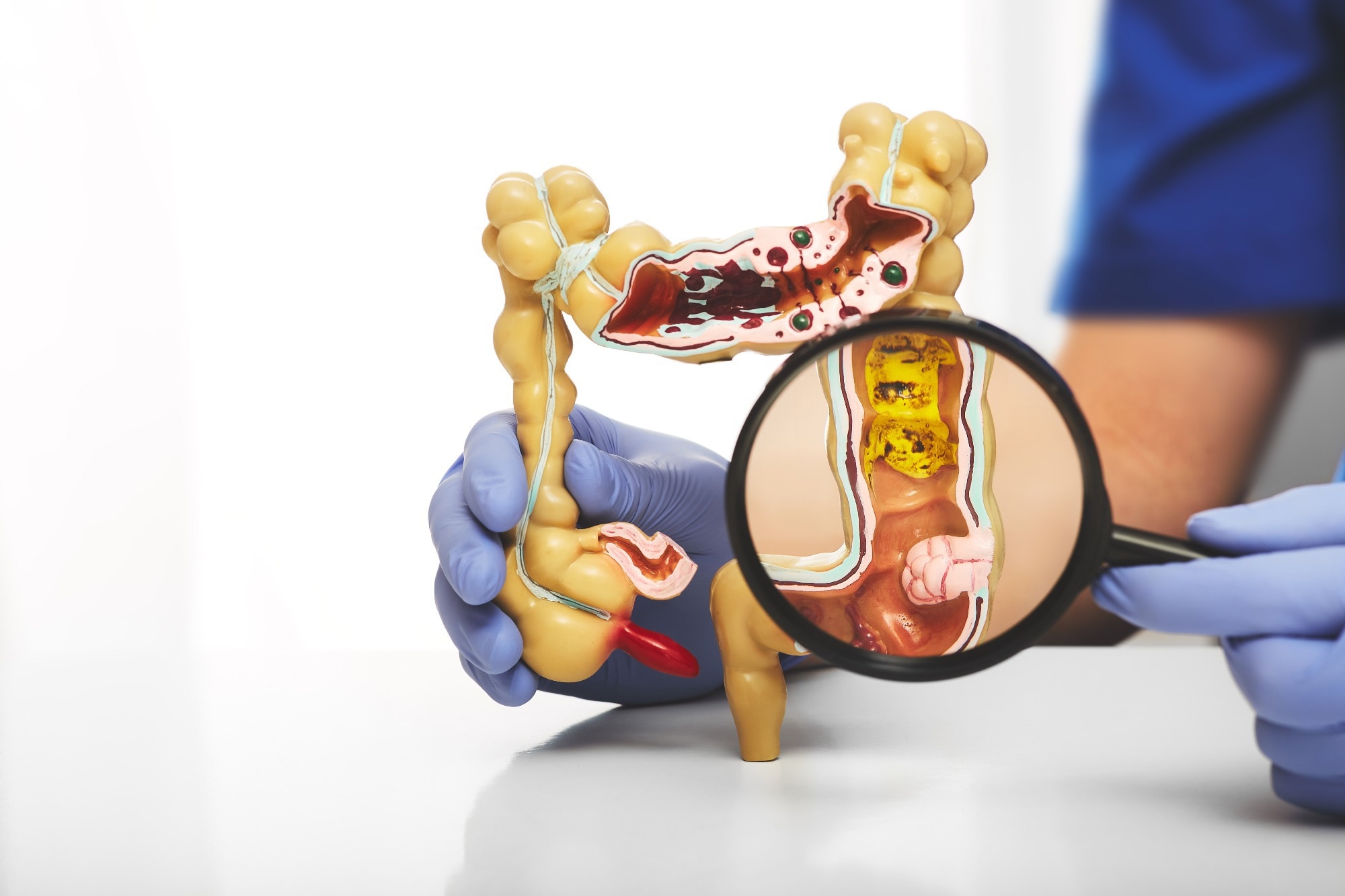A recent eBioMedicine study explores the association between air pollution and colorectal cancer (CRC) risk based on epigenomic analysis.
 Study: Impact of ambient air pollution on colorectal cancer risk and survival: insights from a prospective cohort and epigenetic Mendelian randomization study. Image Credit: Peakstock / Shutterstock.com
Study: Impact of ambient air pollution on colorectal cancer risk and survival: insights from a prospective cohort and epigenetic Mendelian randomization study. Image Credit: Peakstock / Shutterstock.com
The role of air pollution in CRC risk
CRC is one of the most common cancer types worldwide, whose etiology is associated with a wide range of lifestyle and environmental factors. In the context of environmental factors, ambient air pollution is particularly crucial, as it could lead to the development of cancer by affecting the inflammatory system.
A significant association between particulate matter (PM) and risk of CRC, gastrointestinal and liver cancer incidence, and mortality has been documented. Thus, it is imperative to understand the mechanism through which PM influences the incidence of CRC. The synergistic effect of PM with other air pollutants, such as nitrogen oxides, on the incidence of CRC also requires further investigation.
Emerging epigenome-wide association studies (EWAS) have highlighted that exposure to air pollution leads to an alteration in epigenetic markers, particularly DNA methylation (DNAm). This alteration induces inflammation that could increase the risk of disease development and progression.
The formation of 5-methylcytosine in cytosine-phosphate-guanine (CpG) dinucleotides that reflect aberrant DNAm has been identified as an important epigenetic mechanism in CRC carcinogenesis. Considering this finding, it is crucial to understand the role of air pollution in the altered DNAm, which is associated with CRC pathogenesis.
Mendelian randomization (MR) analysis is a powerful tool for identifying causal interferences. It uses genetic variants as proxies for air pollution-related DNAm exposure to identify the causal factor. One major advantage of this method is minimizing reverse causality and confounding factors.
About the study
The current prospective cohort study evaluated the relationship between individual and combined ambient air pollution exposures with CRC risk and overall mortality. It also assessed the pathological effects associated with air pollution-related DNAm and the gene-environment interaction.
The association between air pollutants, including PM10, PM2.5, and nitrogen oxides (NOx and NO2), and CRC incidence and survival were assessed using relevant samples from the United Kingdom Biobank (UKB) cohort. Both genotypic and phenotypic health-related data were obtained from the UKB.
Two-sample epigenetic MR methylation quantitative trait loci (mQTL) analyses were conducted to identify the underlying mechanism of air pollution-related DNAm. Gene-environment interaction and genetic colocalization analyses were performed to elucidate the potential carcinogenic effect of air pollutants on CRC manifestation.
Study findings
A total of 428,632 participants from UKB were considered, 2,401 of whom were diagnosed with CRC and were eligible for the current study. Among these individuals, 533 all-cause deaths and 767 newly diagnosed CRC cases were identified. To determine all-cause mortality among patients with CRC, those with a prior CRC diagnosis were considered.
Consistent with previous studies, the current study also indicated a positive correlation between PM2.5 exposure and elevated CRC risk. The newly developed Air Pollutants Exposure Score (APES) indicated that exposure to various air pollutants, individually or jointly, decreased the overall CRC survival rate in a dose-response manner.
The detrimental prognostic effects of air pollution were more prevalent, although not statistically significant, among men, smokers, and those with insufficient physical activities. Thus, altering certain lifestyle factors could reduce the risk of CRC.
A significant association between air pollution and CRC incidence/survival was observed. DNA methylation occurred within the protein-coding genes of transmembrane BAX inhibitor motif-containing 1 protein (TMBIM1)/paroxysmal nonkinesigenic dyskinesia (PNKD), CX-C motif chemokine receptor 5 (CXCR5), and transmembrane protein 110 (TMEM110), which mediate the adverse effects of air pollution on CRC. The experimental findings strongly indicated an overall detrimental effect of air pollution exposure on CRC development and prognosis.
Air pollution mediates the development of CRC through the systemic inflammatory pathway, which is associated with increased messenger ribonucleic acid (mRNA) and protein levels of interferon-γ (IFN-γ), interleukin production, and blood proinflammatory activity.
The gene-environment interaction analyses indicated that PM2.5 exposure affects the CpG site rs876961 of the TMBIM1/PNKD gene, which influences CRC survival. Long-term PM2.5 exposure has also been associated with increased C-reactive protein levels and the induction of a systemic inflammatory state.
The PM2.5-related CpG site cg16235962 was associated with the CXCR5 gene, which encodes for a vital inflammatory factor in the microenvironment. PM2.5-related CpG site cg16947394 has been associated with the TMBIM1 gene, whereas the presence of rs992157 in the intron of PNKD and TMBIM1s is significantly associated with progression and susceptibility to CRC.
Conclusions
The current study confirmed the detrimental effect of ambient air pollution on CRC risk and survival, as well as the effect of epigenetic alterations of TMBIM1/PNKD, CXCR5, and TMEM110 on CRC pathogenesis. Future studies are needed to elucidate the underlying mechanism by which epigenetic alterations cause CRC development. Notably, the current study identified some modifiable factors, such as physical activity, smoking, and air pollution, which can help prevent CRC.
Journal reference:
- Jiang, F., Zhao, J., Sun, J., et al. (2024) Impact of ambient air pollution on colorectal cancer risk and survival: insights from a prospective cohort and epigenetic Mendelian randomization study. eBioMedicine. doi:10.1016/j.ebiom.2024.105126.








